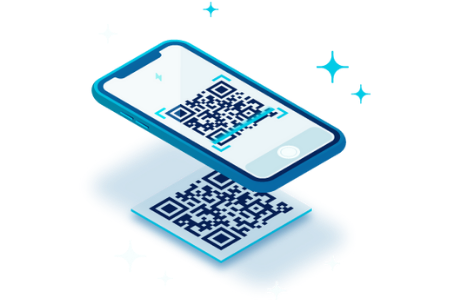2-D barcoding may be coming to paper 1040s
 If the IRS were Superman, paper would be its kryptonite. That’s our analogy to the Taxpayer Advocate’s annual report to Congress regarding the IRS’ well-known pandemic-related problems opening the mail. The Taxpayer Advocate Services’ (TAS) solution is to issue a Taxpayer Advocate Directive giving the IRS 45 days to work with the tax software industry to develop a plan to implement 2-D barcodes on self-prepared 1040s for the 2023 filing season. If the IRS can’t get the software developers on board, it has to tell the TAS, also within 45 days.
If the IRS were Superman, paper would be its kryptonite. That’s our analogy to the Taxpayer Advocate’s annual report to Congress regarding the IRS’ well-known pandemic-related problems opening the mail. The Taxpayer Advocate Services’ (TAS) solution is to issue a Taxpayer Advocate Directive giving the IRS 45 days to work with the tax software industry to develop a plan to implement 2-D barcodes on self-prepared 1040s for the 2023 filing season. If the IRS can’t get the software developers on board, it has to tell the TAS, also within 45 days.
Does the TAS have this power? A section of the Internal Revenue Manual (i.e., the IRS’ operating manual, yes, it has one) says it does. Does the IRS need to comply? Yes, but only to a point; it can modify or rescind a TAD. But if the IRS chooses not to comply, it will get called out in the TAS’ next annual report to Congress. The IRS may want to comply anyway, if it doesn’t want another public relations disaster next winter about how far behind it still is in opening the mail.
2-D barcoding
You know barcodes—every time you check out at your supermarket, your products are scanned using barcodes.
But tax returns aren’t groceries. There are lots of good reasons people still file their 1040s on paper—they’re not tech-savvy, they don’t trust e-filing, they’re afraid of identity theft, and more. But for every paper 1040 filed, someone at the IRS inputs the data, keystroke by keystroke.
Barcoding for substitute paper W-2s has been going on for years, although, frankly, we’ve never really understood the purpose (they also appear on our state return). Now we know—the data entered into the W-2 boxes are recorded in the barcode. Barcoding, therefore, allows the Social Security Administration to process paper W-2s as if they were e-filed. Barcodes don’t yet exist for Forms 941, 940, 1120, or 1099.
The IRS has flipped and flopped on barcoding 1040s for over 20 years, according to the TAS. Barcoding would at least help the IRS speed up the processing of paper returns.
Glitch in the code: The Office of Chief Counsel says the IRS can’t require software developers to do this.
Pretty please: The IRS may, however, request tax-software developers incorporate scannable barcodes on paper-filed returns created through their software.
Another glitch: Form 1040 isn’t a simple two-page form anymore. And this could be a problem. In addition, the IRS and software developers would need to address the scenario where some schedules and other attachments are prepared perfectly by the software, but others are hand prepared by the filer, because the software goofed on entering a deduction or a credit.
OCR technology
The TAS’ other option for the IRS is optical character recognition. OCR technology has advantages and disadvantages compared with 2-D barcoding.
Advantages: It can be used to machine read all paper returns, including returns prepared by hand. And it’s still more accurate than manual data entry.
Disadvantage: It’s less accurate than barcoding. The number 1, for example, could look like the number 7.




